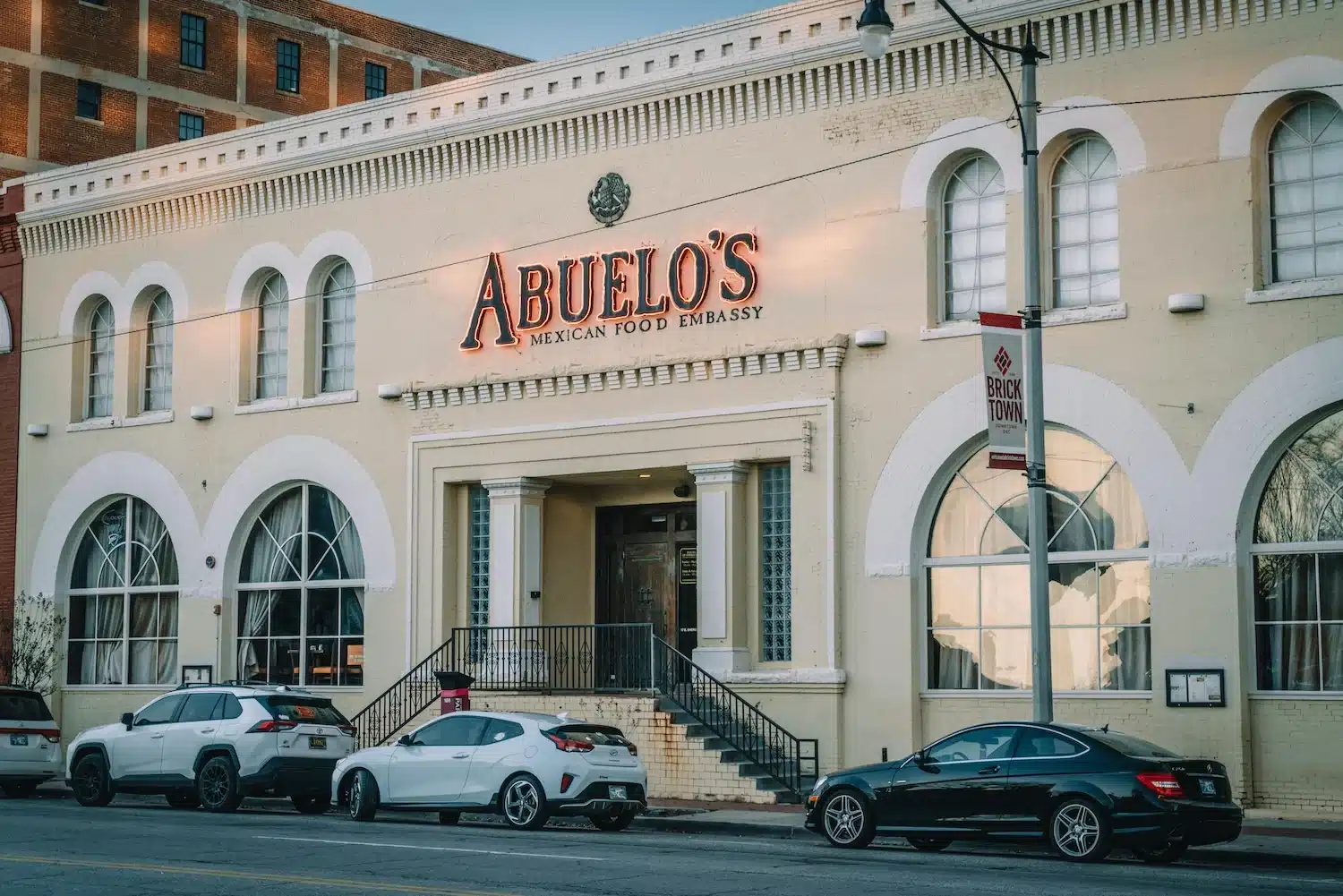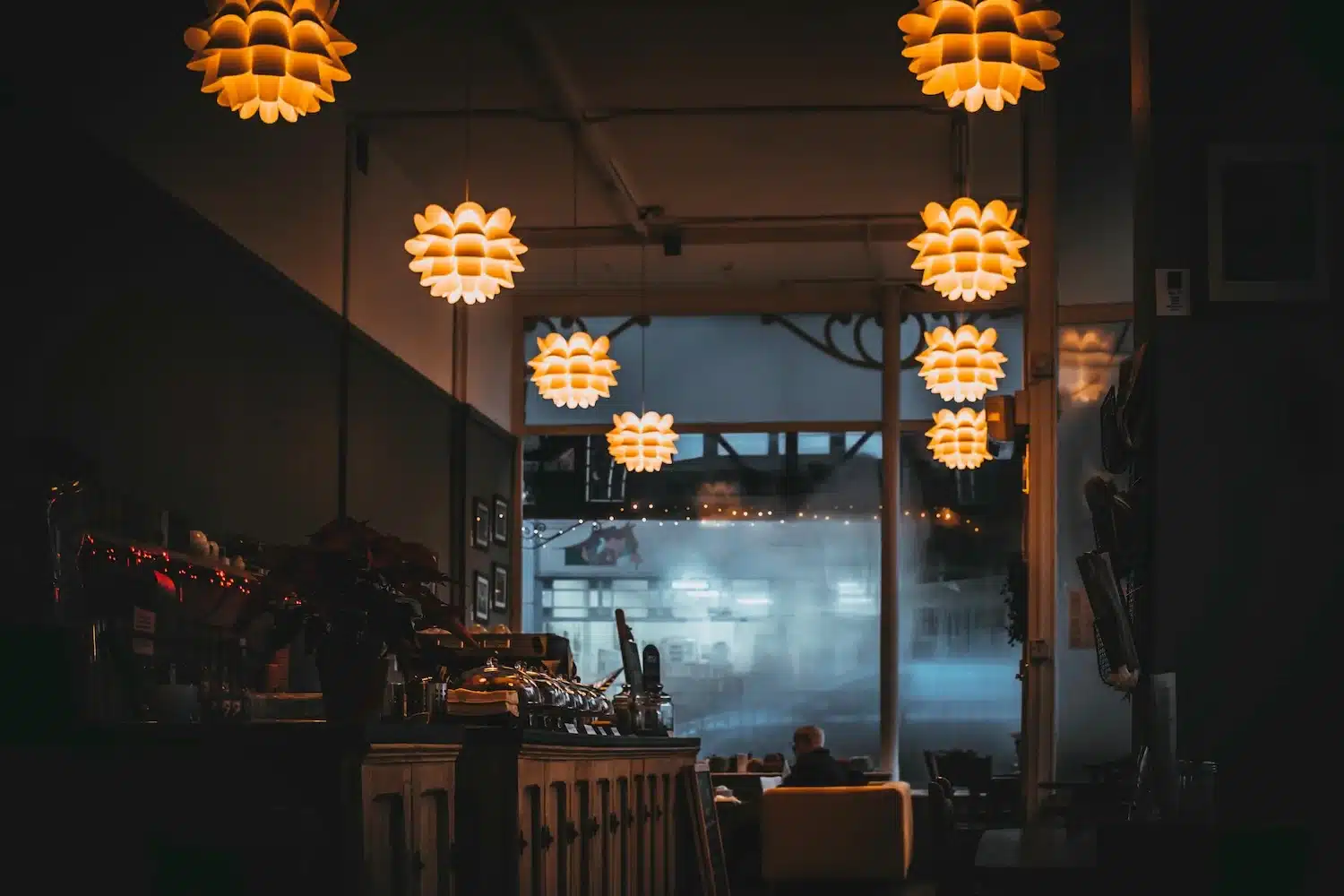Boston’s Little Italy runs on its incredible food scene with 87 restaurants, bakeries, and specialty food shops that make it one of the city’s most vibrant food destinations. Regina Pizzeria has served legendary brick-oven pizzas since 1926, while The Daily Catch tempts visitors with its signature $95 lobster fra diavolo.
This North End neighborhood perfectly blends colonial history and Italian culture. Visitors can walk through Paul Revere’s house and the Old North Church between bites of homemade pasta and fresh cannoli. The neighborhood comes alive each summer when Saint Anthony’s Feast – New England’s largest religious festival – fills the streets with 100 food carts and live entertainment.
Let the experts at Metropolitan Shuttle show you the neighborhood’s best spots, from amazing restaurants to historic landmarks and local secrets. You’ll find the city’s best cannoli, learn where to park easily, and know exactly when to visit for an unforgettable experience.
The Rich History of Boston’s North End
Boston’s North End remains the city’s oldest residential community. People have lived here since its colonization in the 1630s. This small peninsula neighborhood covers barely one square mile, yet it has shaped American history and culture for more than four centuries.
From Puritans to Italian immigrants
Reverend William Blackstone, an Anglican minister, became the first European to settle in the North End in 1623. English Puritans soon followed, seeking religious freedom and building a thriving community. They called the area “Shawmut,” a name used by Native Americans who first lived in this region.
The North End became Boston’s most crowded neighborhood by the mid-18th century. Wealthy merchants lived in stylish homes alongside artisans and laborers who worked in nearby shipyards and warehouses. Governor Thomas Hutchinson and Paul Revere were among its notable residents.
The neighborhood saw remarkable demographic changes throughout its history:
- 1820s-1840s: Irish immigrants arrived and built St. Mary’s Catholic Church on Endicott Street in 1836
- 1860s-1880s: Eastern European Jews and Italians, mostly Genoese from northern Italy, made this area their home
- 1880s-1920s: Southern Italians arrived in huge numbers and gradually replaced earlier immigrant groups
Irish immigrants made up more than 50% of the North End’s population by 1850. Jewish and Italian residents outnumbered the Irish by 1895. These waves of new settlers shaped the neighborhood’s character.
The North End’s role in the American Revolution
Patriots like Paul Revere and Samuel Adams turned the North End into a hub of revolutionary activity. Two lanterns shone from the Old North Church tower on April 18, 1775, warning about British troops heading toward Lexington and Concord – a signal that launched the American Revolution.
The spirit of revolution had grown stronger each year. Anti-Stamp Act rioters stormed Lieutenant Governor Thomas Hutchinson’s mansion in North Square in 1765, forcing him to escape through his garden. Patriots later gathered at local taverns, including the Green Dragon, to plan the Boston Tea Party in 1773.
North Square became the heart of patriot activities. Paul Revere’s house still stands today. He hosted memorial “Illuminations” there to honor Christopher Seider’s death and remember the Boston Massacre in 1771. British forces later tore down the North Meeting House for firewood during Boston’s siege.
How Little Italy was born
Genoese immigrants from northern Italy started the North End’s journey to becoming “Little Italy” in the 1860s. They settled around Ferry Court near today’s Sumner Tunnel entrance. These newcomers sold fruits, vegetables, wine, cheese, and olive oil from their storefronts and stalls at Haymarket.
Southern Italians from Sicily, Calabria, and Campania arrived between 1880 and 1920. They left their homeland to escape poverty and political turmoil. People called the North Square area “Little Italy” by 1890. These immigrants found themselves in a neighborhood filled with run-down tenement buildings.
The Italian community grew at an amazing pace. From 14,000 residents in 1900, the population soared to 37,000 by 1920. The neighborhood reached its peak in 1930 with 44,000 Italians – 99.9% of all residents – making it more crowded than Calcutta.
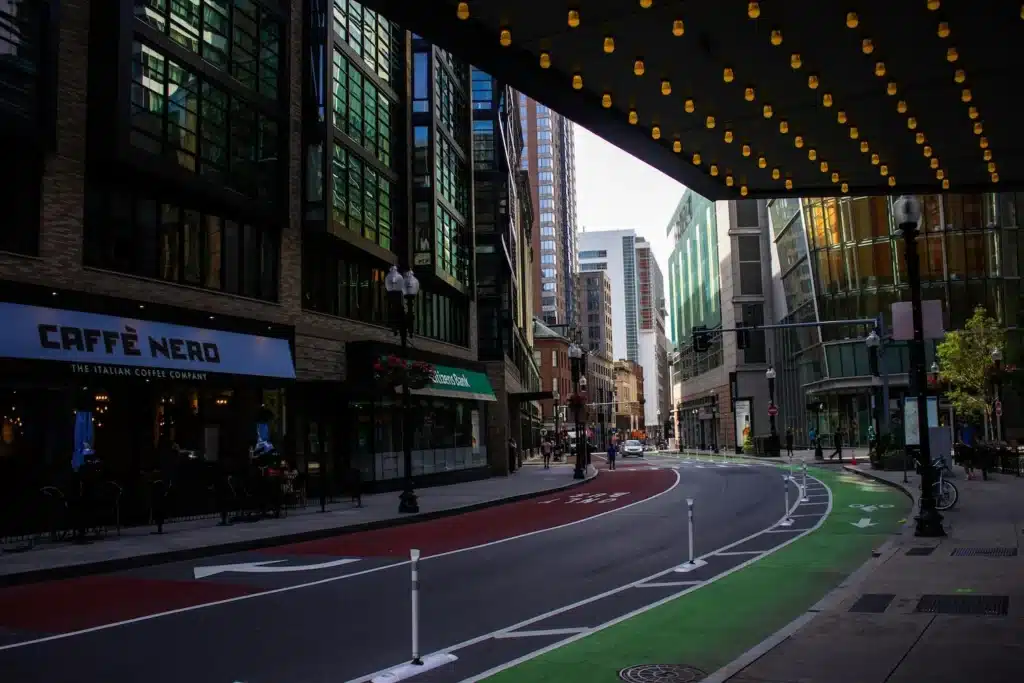
First-generation Italians followed a “chain migration” pattern. Young men earned money to bring their relatives from Italy. This created distinct communities within the neighborhood that preserved their regional dialects and traditions. Each group – Genoese, Sicilians, Campanians, Avellinese, Neapolitans, and Abruzzesians – created their own small communities.
Italian Catholic faith blossomed with Sacred Heart Church in North Square and St. Leonard’s Church on Hanover Street. St. Leonard’s opened in 1899 as New England’s first Italian church. These parishes and summer religious festivals, which continue today, helped keep the community’s cultural identity alive.
Today, Italian Americans make up less than 30% of North End residents. Yet the neighborhood still celebrates Italian culture. Its amazing food scene, religious festivals, and rich traditions attract visitors who come to experience Boston’s beloved Little Italy.
Best Times to Visit the North End
Best Times to Visit the North End
Your trip to Boston’s Italian quarter depends on crowds, weather, and seasonal events. Good timing helps you experience this charming neighborhood at its best.
Peak seasons and crowd levels
Summer months from June through August bring life to the North End. Tourist numbers peak during this time, and weekend evenings see packed streets. Hanover Street becomes a hub of activity in July and August as people flock to outdoor dining spots.
A more relaxed visit awaits you during shoulder seasons. Late spring (May) and early fall (September-October) give you great weather with fewer crowds. You can enjoy the North End’s atmosphere without fighting for sidewalk space or long restaurant waits.
December through March sees hotel prices drop dramatically. Boston’s Little Italy feels more authentic and local in winter. The cold weather lets you get tables at popular restaurants that stay booked weeks ahead in summer.
Here’s a tip: stay away during early September and May graduation dates when Boston’s university families fill the city. The neighborhood also gets packed when Italy plays in the World Cup, with fans filling every café and street corner.
Weather considerations
Boston shows off four distinct seasons that shape your North End experience. Locals say it best: “If you don’t like the weather, wait five minutes”.
Temperatures climb to the 70s and 80s from early June through mid-September. August hits around 80°F with rain showing up about 10 days monthly. These warm days create the perfect setting for outdoor meals and neighborhood walks.
Fall paints a beautiful picture. Temperatures cool to the high 60s in September as New England’s famous foliage starts its color show. October averages 62°F, giving you perfect weather to explore with colorful trees as your backdrop.
Winter months get cold, with January dropping to 29°F. While it might be too chilly for long walks, snow creates magical scenes on the North End’s historic brick buildings.
April starts spring with 48°F before May brings temperatures in the upper 50s. Trees bloom and crowds stay thin before summer tourists arrive.
Festival calendar
Summer Italian religious feasts stand out as the North End’s biggest attractions. These celebrations fill streets with processions, music, food vendors, and cultural displays.
August hosts most feasts, with major celebrations every weekend. Each feast honors different Italian saints:
- Saint Agrippina Feast (First weekend of August) – Shows off a Thursday procession and Sunday Grand Procession at noon
- Madonna Della Cava Feast (Second weekend of August) – A 104-year tradition matching celebrations in Pietraperzia, Sicily
- Fisherman’s Feast (Mid-August) – Boston’s oldest running feast since 1910 features the spectacular “Flight of the Angel”
- Saint Anthony’s Feast (Last weekend of August) – National Geographic Magazine calls it the “Feast of All Feasts” – New England’s biggest Italian religious festival
Summer festivities start in June with the Santa Maria Di Anzano Procession, followed by smaller events throughout the season.
These feast weekends offer real cultural immersion. Just remember that visitors from all over New England make these events crowded.
Must-Try North End Restaurants
Garlic and tomato sauce scents fill the air as you walk through Boston’s Italian neighborhood’s narrow streets. This small area packs nearly 100 restaurants. Picking the right spot makes the difference between an amazing meal and falling into a tourist trap.
Classic Italian trattorias
Little Italy Boston’s soul lives in its traditional trattorias. Carmelina’s on Hanover Street dishes out amazing pasta in a stylish space with brick walls and front panels that open up. Their “Crazy Alfredo” brings in crowds who love the house-made fettuccine mixed with spicy sauce, sausage, chicken, and sweet roasted peppers.
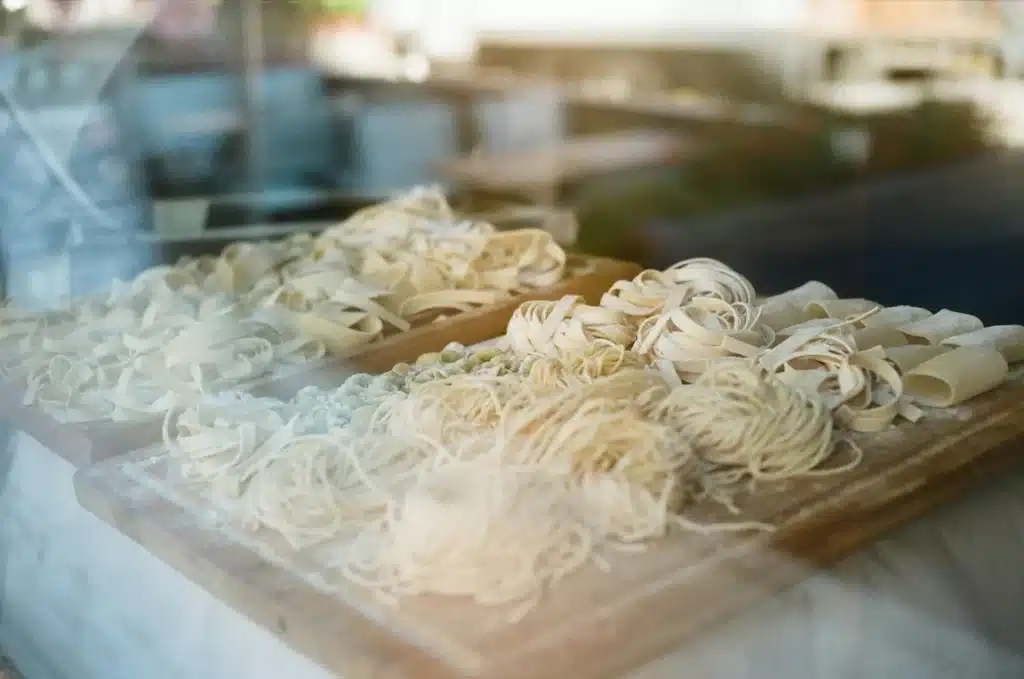
The Daily Catch gives you a true Sicilian seafood experience from their small, cash-only kitchen. They serve a $95 lobster fra diavolo entrée in plastic cups and you’ll walk through their dish station to get to the bathroom. The black squid ink pasta has become their trademark dish that’s worth every minute of waiting.
Giacomo’s draws long lines even on quiet weeknights. What’s the payoff? You’ll get huge servings of chicken parm and their famous zuppa di pesce – a giant plate of linguine packed with lobster, shrimp, scallops, calamari, clams, and mussels for just $60.
Modern dining spots
New Italian spots shine bright next to the old favorites. Table stands out with their prix fixe, seven-course family-style dinners shared with new friends. Chef Jen Royle’s pasta feasts create unique shared moments.
Bricco, Frank DePasquale’s crown jewel, gets its breads and meats from his old-world bakery and meat shop next door. Their soft gnocchetti baked with bufala mozzarella never fails to wow guests looking for high-end Italian food.
The Red Fox adds fresh energy to the North End. You can’t miss their savory-sweet zeppole with prosciutto and shareable rolled lasagna. The bar mixes classic martinis and seasonal drinks.
Budget-friendly options
You’ll find plenty of affordable spots despite the area’s fancy reputation. Galleria Umberto sells Sicilian pizza slices at $2.25, panzerotti at $2.50, and arancini at $4.50 – just get there early because they close when food runs out.
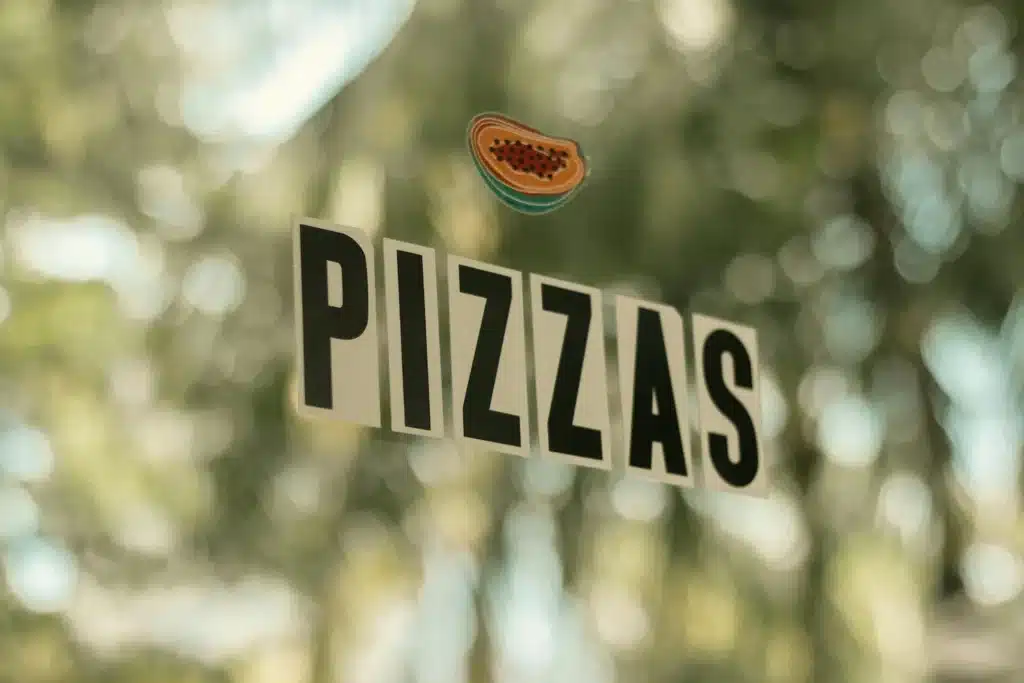
La Famiglia Giorgio’s gives you huge helpings of Italian classics at great prices. “Little Al’s favorite” – chicken cutlet with broccoli and gnocchi in pink vodka sauce – leads their menu.
Panza serves traditional dishes at fair prices on Hanover Street. Their lobster ravioli, served through open windows, tastes upscale without the high cost.
More budget options include:
- Theo’s Cozy Corner – A tiny diner serving fresh food at great prices
- Monica’s Mercato – Killer Italian subs loaded with prosciutto, mortadella, and salami
- Mangia Mangia – Tasty chicken cutlet parm subs around $12
Reservation tips
Book ahead to eat well in the North End. Most places take reservations, and OpenTable.com helps you check multiple restaurants at once.
Mamma Maria’s five dining rooms spread across two floors create intimate spaces that fill up fast. Carmelina’s needs advance booking year-round because tables are always full.
Show up before 5:00 PM and you might skip reservations altogether. This works great for spots like Regina Pizzeria or The Daily Catch that don’t take bookings.
Weeknight dining beats weekend crowds for getting into top spots. Book 1-2 weeks ahead for weekend dinners at popular restaurants.
Restaurants away from Hanover Street often have more openings and laid-back vibes. Locals love Limoncello, which sits just off the main tourist path.
The Famous Cannoli Battle
You haven’t really experienced Little Italy Boston until you’ve jumped into the city’s hottest food debate: who makes the best cannoli? Three famous bakeries sit just blocks apart, and both tourists and locals swear by their favorites.
Mike’s Pastry vs. Modern Pastry vs. Bova’s
Mike’s Pastry opened in 1946 and has grown into a Boston landmark known for its blue and white boxes that people carry all over the city. Their huge cannoli come in 19 flavors, ranging from classic ricotta to chocolate chip, pistachio and more. The walls showcase bright photos of each variety in their display cases.
Just across Hanover Street, you’ll find Modern Pastry, a 93-year old shop. This cozy little place fills cannoli right when you order them, which keeps their shells super crispy. The shop feels like a slice of Italy with its pastry cases full of colorful treats and Italian chatter from behind the counter.
Bova’s Bakery sits at Prince and Salem streets and has kept its ovens running since 1926. This place never closes – it’s open 24/7. Their special Florentine cannoli uses a delicate, lace-like cookie shell instead of the usual pastry.
Food critics call this three-way competition “one of America’s greatest culinary rivalries”. Locals and tourists often pick different favorites. One resident puts it simply: “Tourists like Mike’s, locals like Modern”. But even Boston natives can’t agree – many Reddit users say Mike’s really does have the best cannoli, even if they hate admitting it’s “too popular/touristy”.
What makes a perfect cannoli
The magic of a great cannoli lies in two things: its shell and filling. The shell should be thin yet sturdy enough to hold the filling without getting soggy.
Mike’s makes all their shells in-house, cranking out 5,000-7,000 every week. Modern Pastry gets theirs from Golden Cannoli. This creates quite a debate – some people love freshly fried shells, while others care more about how they’re filled.
Modern’s fill-to-order approach gives them an edge. Their staff grabs empty shells from glass jars, fills them with ricotta cream in the back, and adds a dusting of powdered sugar before wrapping them in twine-tied boxes. This keeps the shells extra crispy.
Each place has its own special filling:
- Mike’s goes sweeter and pre-fills various flavors
- Modern’s has a “tangy richness reminiscent of cheesecake”
- Bova’s ricotta filling tastes “wonderfully creamy and less sweet than Mike’s”
Size and price matter too. Modern’s cannoli run smaller (about 4.5″ long) than Mike’s (roughly 6″ long). At Bova’s, you’ll pay $5.00 for a regular cannoli.
Beyond cannoli: other sweet treats
These shops make lots more than just cannoli. Mike’s serves amazing powdered sugar-covered donut cookies (taralli), smooth gelato, and chocolate-covered treats called bocconotti that taste like fancy cream puffs.
Modern Pastry really shines with its European cakes, tarts, macaroons, and pies. Their sfogliatella – a tricky-to-make flaky pastry stuffed with orange-flavored ricotta – gets rave reviews: “Modern does the best version outside of Napoli”.
Bova’s does great Italian cookies, fresh breads, and unique stuff you won’t find elsewhere. Food lovers rave about their cheese-and-spinach stuffed rice balls (arancini), rectangular “bakery” pizza, and ricotta pie. Being open all night makes Bova’s the go-to spot for late-night sugar fixes.
Looking beyond these three famous spots? Maria’s Pastry grabbed Boston Magazine’s Best Cannoli Award in 2013. People love their cinnamon almond biscotti (quaresimali) and powdery vanilla lady fingers (savoiardi).
Many visitors try all three bakeries and still can’t pick a winner. One food critic summed it up: “This rivalry is not about the cannoli, but the experience that each bakery brings out”. The best way to settle this debate might be to try them all yourself.
Pizza and Pasta Perfection
Little Italy Boston’s brick-lined streets are home to New England’s most celebrated pizza and pasta spots. You’ll find everything from decades-old pizzerias to fresh pasta havens, where authentic Italian cuisine comes to life through classic preparation techniques.
Regina Pizzeria and other pizza legends
Regina Pizzeria on Thacher Street stands proud as a monument to pizza excellence since 1926. Their brick oven hasn’t stopped burning since the Coolidge administration, giving each pie a century’s worth of seasoning. Regina’s stands out because:
- The crust comes from a secret century-old recipe with special natural yeast
- The sauce stays light yet spicy with aged romano hints
- The cheese uses specialty aged whole milk mozzarella
Eating at Regina feels like “your Italian grandmother’s basement crossed with a police precinct break room”. Generations have smoothed down the red vinyl booths in a space where pizza clearly matters more than ambiance. Paper plates and plastic forks show where their priorities lie.
Regina’s popularity means long lines, but locals know the best times to avoid the rush. Most people say it’s worth the wait. TripAdvisor diners rave about the “perfect chewy, thin crust, lots of fresh mozzarella” that reminds them of real Neapolitan pizza.
Galleria Umberto gives you a taste of Sicilian-style pies. They make limited quantities daily and shut down once they’re sold out – usually around 2:30pm. Their square slices feature a fluffy crust topped with red sauce and just the right amount of mozzarella.
Fresh pasta destinations
The Daily Catch serves up Sicilian-inspired seafood pasta right “in the pan”. This signature style started by chance (“We had no plates!”) and became their trademark. Black ink pasta here captures the ocean’s briny, umami essence.
Carmelina’s creates magic with pasta behind retractable front walls. Chef Damien DiPaola’s kitchen turns out showstoppers like Maine lobster-stuffed ravioli topped with vodka-sauced tiger shrimp. Diners can watch their meals come together in the open kitchen.
Panza’s lobster ravioli draws crowds to their open-window spot on Hanover Street. This creamy dijon-sauced pasta ranks high on food lovers’ must-try lists.
La Famiglia Giorgio’s brings Roman inspiration to their fresh pasta. “Little Al’s favorite” combines chicken cutlet, broccoli, and gnocchi in pink vodka sauce. The portions here are huge – you’ll likely have enough for tomorrow’s lunch.
Italian sandwich shops
Monica’s Mercato rules the sandwich scene with “THE best Italian sub in Boston”. Their foot-long masterpiece layers paper-thin prosciutto with imported Italian meats, cheeses, and top-notch ingredients. A Jersey-raised customer put it best: “You think you know a better Italian sub? You don’t”.
Down a quiet Hanover Street alley, Bricco Panetteria bakes fresh bread daily and crafts exceptional sandwiches. Locals flock here for authentic Eggplant and Chicken Parmigiano sandwiches.
Salumeria Italiana has been a Richmond Street fixture since 1962. Their Italiano Panini packs house-favorite salami, provolone, lettuce, tomato, and hots with oil and vinegar.
These sandwich spots charge premium prices for premium ingredients. Customers agree the quality’s worth every penny, especially since one sandwich often feeds two.
Historical Sites and Freedom Trail Stops
Little Italy Boston holds more than just pasta and cannoli. This historic neighborhood features treasures from America’s revolutionary past. The Freedom Trail, a 2.5-mile-long path, connects 16 historic sites and weaves through the North End with three key stops.
Paul Revere House
The Paul Revere House, built around 1680, remains downtown Boston’s oldest structure. This simple wooden building became the famous patriot’s home from 1770 to 1800.
The building later turned into a tenement with shops on its lower level until it faced demolition in the early 1900s. Revere’s great-grandson, John P. Reynolds Jr., stepped in to save it. The house opened its doors as a historic museum in April 1908.
Visitors can now experience 18th-century family life and see displays of silver and artifacts from Revere’s business ventures. The house retains 90% of its original 1680 structure, including two doors, three window frames, and parts of the flooring and raftering.
The year 2025 marks 250 years since Paul Revere’s Midnight Ride and the American Revolution’s beginning. Revere left his North Square home on April 18, 1775, to warn Samuel Adams and John Hancock about their possible arrest by British soldiers.
Old North Church
Old North Church, 1723 old, stands as Boston’s oldest church building. Its place in history was sealed on April 18, 1775, when church sexton Robert Newman and vestryman John Pulling Jr. climbed the steeple to hold two lanterns high. Their signal warned others that British forces were crossing the Charles River toward Lexington and Concord.
The church’s interior showcases box pews that wealthy members bought as property. Less affluent members, including servants, indentured servants, people of color, and children under 12, sat in the gallery.
Modern visitors can explore the sanctuary, crypt, and bell tower. The sanctuary’s underground holds over 1,100 bodies, revealing early congregants’ burial practices.
Copp’s Hill Burying Ground
Copp’s Hill, dating from 1659, grew into Boston’s largest colonial burial ground. William Copp, a shoemaker, donated this land. Many North End merchants, artisans, and craftspeople found their final rest here.
Famous burials include fire-and-brimstone preachers Cotton and Increase Mather, Old North Church sexton Robert Newman, USS Constitution builder Edmund Hartt, and Black Freemasonry founder Prince Hall. A potter’s field on the Charter Street side became the resting place for many free African-Americans.
The hill’s elevation proved strategically valuable during the Revolutionary War. British forces used this spot to attack Breed’s Hill with naval guns during the Battle of Bunker Hill. Some records suggest British soldiers practiced their aim on headstones, particularly targeting Captain Daniel Malcolm’s grave, a Sons of Liberty member.
Hidden Gems of Little Italy Boston
The North End’s famous attractions pull in the crowds, but the neighborhood’s true character lies in its secret spots and local hangouts.
Lesser-known food spots
The North End has more than just Italian cuisine. Tenoch makes outstanding Mexican food, and their tortas (telera bread sandwiches packed with chorizo and Oaxacan cheese) have created a loyal following. Theo’s Cozy Corner serves up filling breakfast meals that won’t break the bank.
You’ll find Bricco Panetteria tucked away in an alley next to Bricco restaurant. They bake fresh bread from 8am-5pm (Sunday-Thursday) and 7am-9pm (Friday-Saturday). Locals line up for their ciabatta, baguettes, and sunflower bread.
Modern Pastry’s underground “speakeasy” serves up martinis and pub-style food Tuesday-Friday (5pm-11pm), Saturday (10am-12am), and Sunday (10am-9pm).
Quiet corners and parks
The North End has several peaceful spots to escape. All Saints Way, nestled in an alley between 4-8 Battery Street, features a street-side shrine that people from around the world have visited for over a decade.
North End Park along the Rose Kennedy Greenway shows off amazing views of the Zakim Bridge and Boston’s skyline. The park’s seasonal garden blooms with native flowers and gives visitors a break from city life.
Armenian Heritage Park features a labyrinth-like Abstract Sculpture & Beacon that celebrates immigrant roots through interactive displays. Prince Street Park and Paul Revere Mall give you quiet spaces away from the busy streets.
Local boutiques and shops
Shake the Tree on Salem Street brings together floral dresses, letterpress cards, cookbooks, and mixed-media jewelry. Owner Marian Klausner picks inspiring items from her travels around the world.
I AM Books, an independent Italian American bookstore, stocks over 1,200 titles in English and Italian, plus Italian comics, games, and ceramics.
Since 1932, Polcari’s Coffee has sold coffees, teas, and spices from antique brass bins. Their secret dipping oil mix remains a local favorite.
Getting Around the North End
A strategy helps you navigate the cobblestone streets of Little Italy Boston, no matter how you arrive. The neighborhood packs centuries of history into just 0.36 square miles, making it ideal to explore on foot.
Parking strategies
Boston’s North End makes parking challenging, but you have several options:
- Haymarket Garage gives you the best deal through validation—$3 for 3 hours when you visit North End businesses, restaurants, or attractions
- Private garages start their rates around $25 for 2 hours
- Parcel 7 Garage works with participating businesses but limits your stay to 3 hours
You might want to think about parking at Assembly Row garages (free for 3 hours, $2-3 for 4-5 hours) and taking the Orange Line. Street parking remains scarce since residents claim most spaces. The streets have complex restrictions, so read all signs before you leave your car.
Public transportation options
The most economical way to reach the North End is public transit:
The MBTA subway (“T”) connects through multiple points. You’ll find the closest stations at Aquarium (Blue Line) and Haymarket (Green and Orange Lines), just a block or two from the neighborhood’s edge.
Haymarket Station sees more travelers after dark, making it a safer choice for evening trips. Green Line trains arrive every five minutes, so you won’t wait long.
Walking routes and self-guided tours
The North End’s narrow streets make walking the natural choice. New visitors love following the Freedom Trail’s red brick line through the neighborhood that showcases historical landmarks like Paul Revere House and Old North Church.
Food lovers can take self-guided food tours that blend history with culinary adventures. The sort of thing I love about this area is how you can just wander—locals say getting “lost” in the winding streets helps you find favorite shops and quiet spots.
Online tour maps show routes that connect major attractions with hidden gems. These ancient pathways date back to 1630, and half the fun comes from unexpected discoveries along the way.
Discover Boston’s North End With Metropolitan Shuttle
Exploring Boston’s historic and flavorful North End with a large group of family and friends is effortless and enjoyable with a Boston charter bus rental from Metropolitan Shuttle. Known as the city’s “Little Italy,” the North End offers a charming mix of cobblestone streets, old-world architecture, and some of the best Italian cuisine in the country. With your private shuttle providing convenient pick-up and drop-off, your group can easily visit iconic North End sites. With Metropolitan Shuttle handling the transportation and parking, your group can relax, stay together, and soak up the culture, history, and flavors of Boston’s North End without a worry.
Conclusion
Boston’s North End is a unique blend of American history and Italian culture. This compact neighborhood weaves centuries of stories through its narrow streets, from Paul Revere’s midnight ride to modern festivals that bring thousands of visitors.
Little Italy Boston thrives on its food scene. The neighborhood boasts legendary pizzerias, fresh pasta havens, and three rival cannoli bakeries that create an authentic Italian experience. The area’s 87+ restaurants preserve culinary traditions passed down through generations.
Religious festivals light up the streets during summer and celebrate Italian heritage. These celebrations, along with historic sites like the Old North Church and Paul Revere House, make the North End an essential stop in Boston.
Visitors who explore the neighborhood’s hidden corners find unexpected delights. Quiet bakeries, peaceful parks, and local boutiques provide an escape from busy tourist areas. Nearby T stations and parking garages with validation make access easy.
Smart planning helps you get the most from your visit. The best times are during shoulder seasons when crowds thin out. Make restaurant reservations early and take time to explore the historic streets. Each visit to the North End brings new surprises – from a family-run pastry shop to a serene garden with harbor views.
FAQs
Q1. What are the must-visit attractions in Boston’s North End?
The North End offers a mix of historical sites and culinary delights. Key attractions include Paul Revere House, Old North Church, and Copp’s Hill Burying Ground. For food lovers, don’t miss trying cannoli at Mike’s Pastry or Modern Pastry, and enjoying authentic Italian cuisine at restaurants like Regina Pizzeria or The Daily Catch.
Q2. When is the best time to visit the North End?
The best time to visit depends on your preferences. Summer (June-August) is busiest with festivals and outdoor dining, but also crowded. For fewer tourists and pleasant weather, consider late spring (May) or early fall (September-October). Winter offers a more local experience and lower hotel prices, though it can be cold.
Q3. How can I navigate parking in the North End?
Parking can be challenging, but there are options. The Haymarket Garage offers the best deal with validation – $3 for 3 hours when patronizing North End businesses. Private garages typically start around $25 for 2 hours. Alternatively, consider parking outside the area and taking public transportation to avoid parking hassles.
Q4. What are some hidden gems in the North End? Look for lesser-known spots like All Saints Way, a street-side shrine in an alley, or Bricco Panetteria, a hidden bakery down an alley. For a quiet moment, visit North End Park or Armenian Heritage Park. Don’t miss unique shops like I AM Books, an Italian American bookstore, or Polcari’s Coffee, selling coffees and spices since 1932.
Q5. How can I experience the North End’s Italian heritage?
To immerse yourself in the North End’s Italian culture, visit during the summer religious festivals, especially Saint Anthony’s Feast in late August. Try authentic Italian cuisine at family-run restaurants, sample cannoli from competing bakeries, and explore Italian specialty shops. Walking tours can also provide insights into the neighborhood’s Italian American history and traditions.

